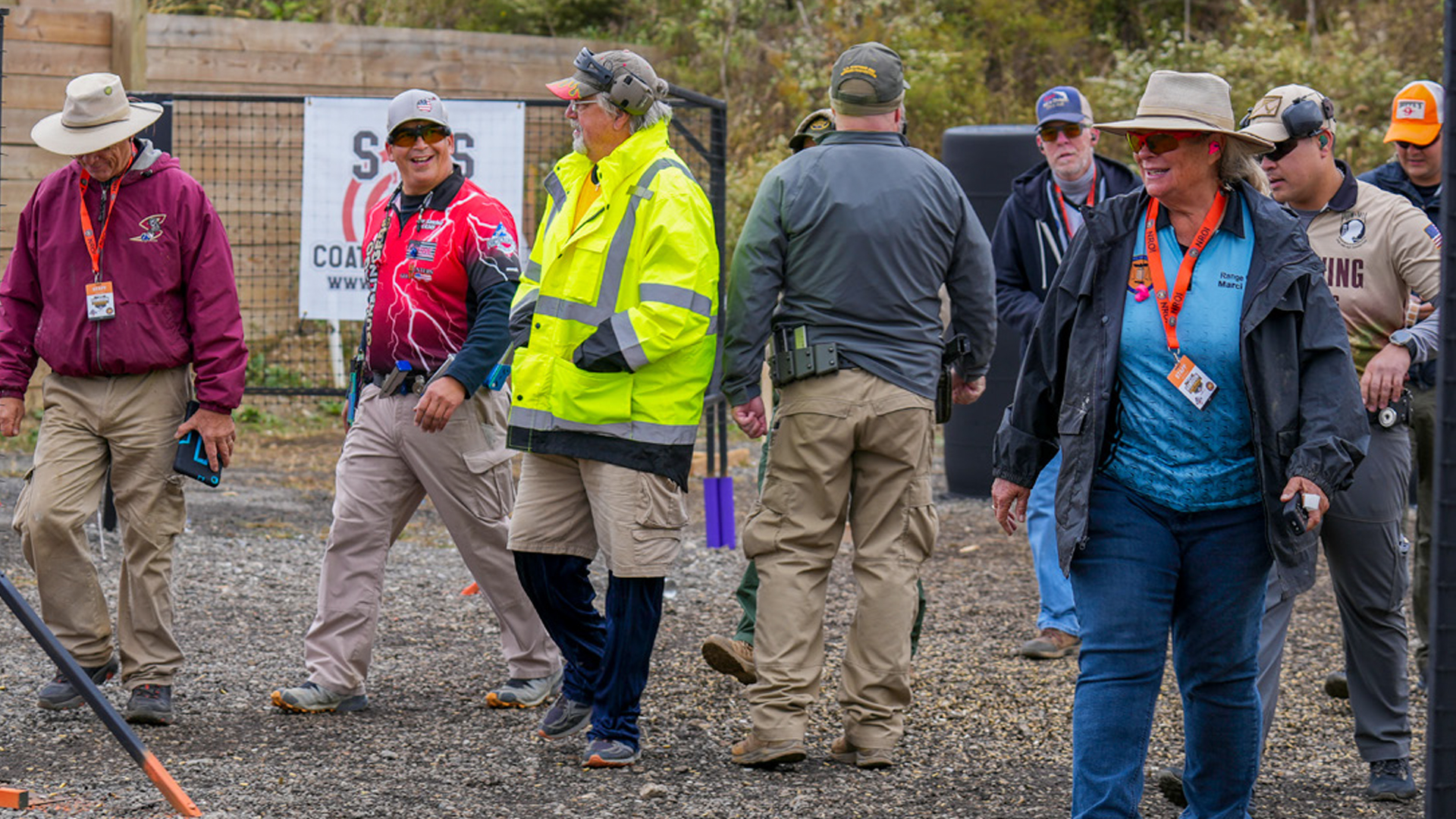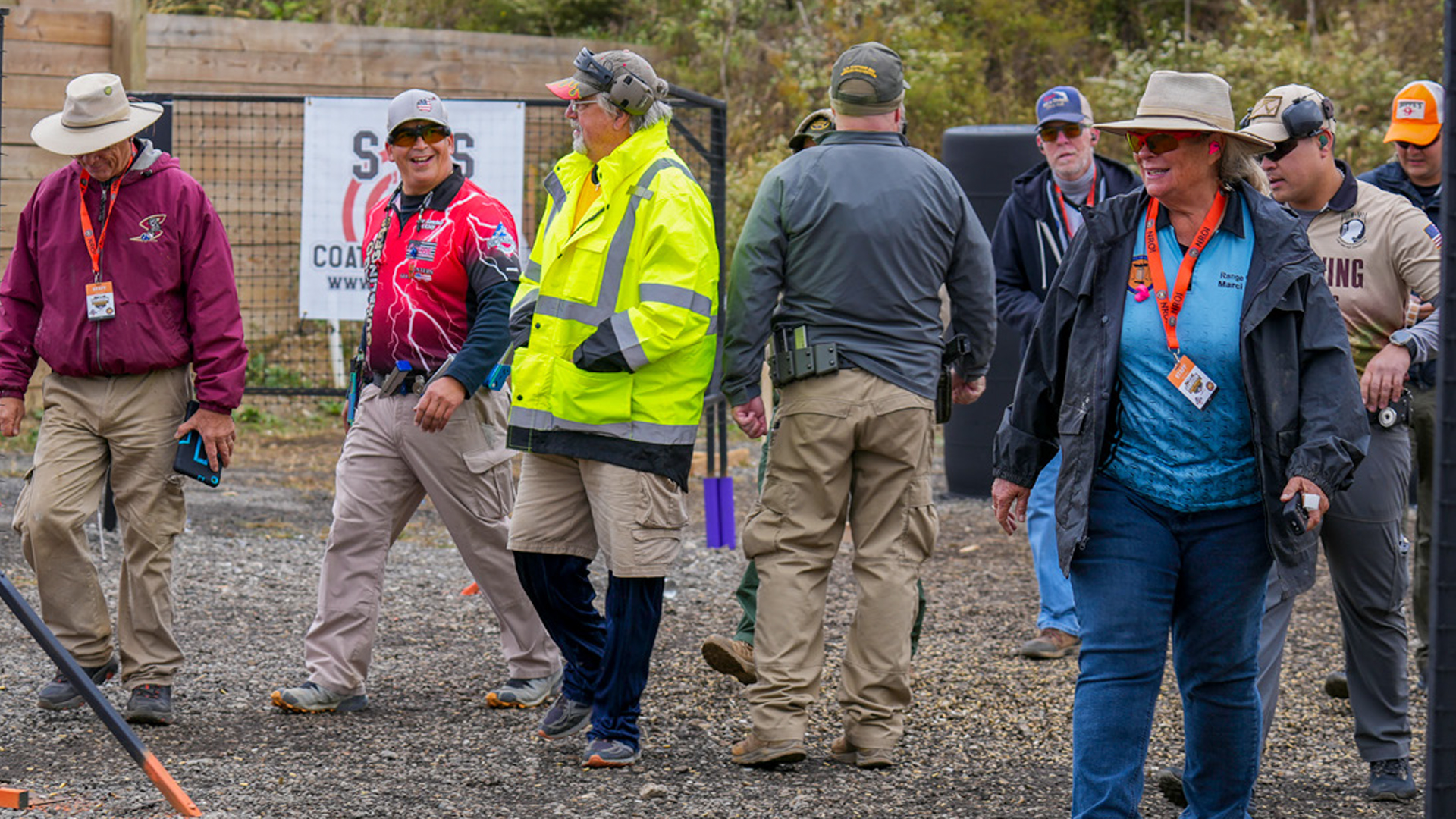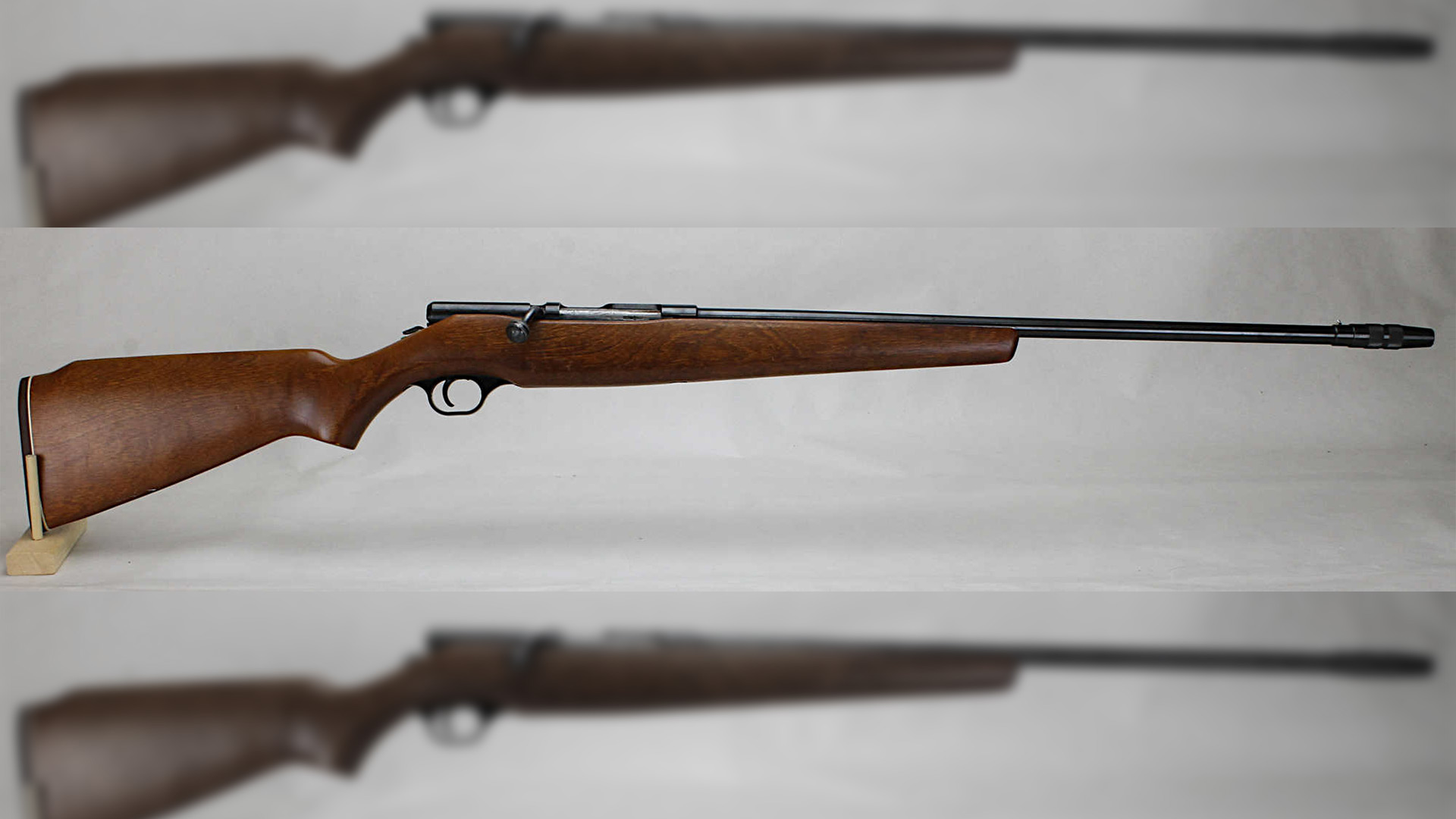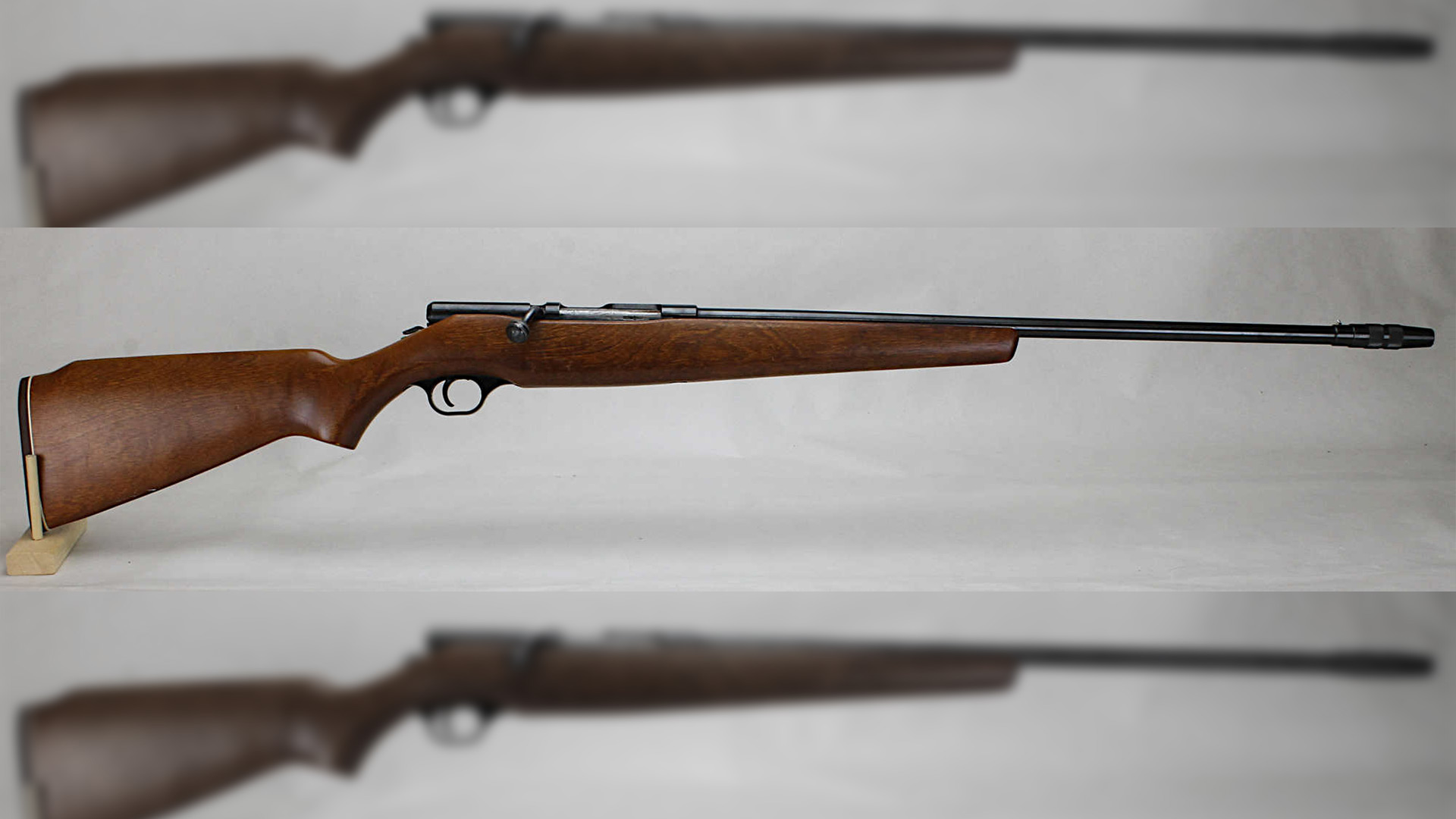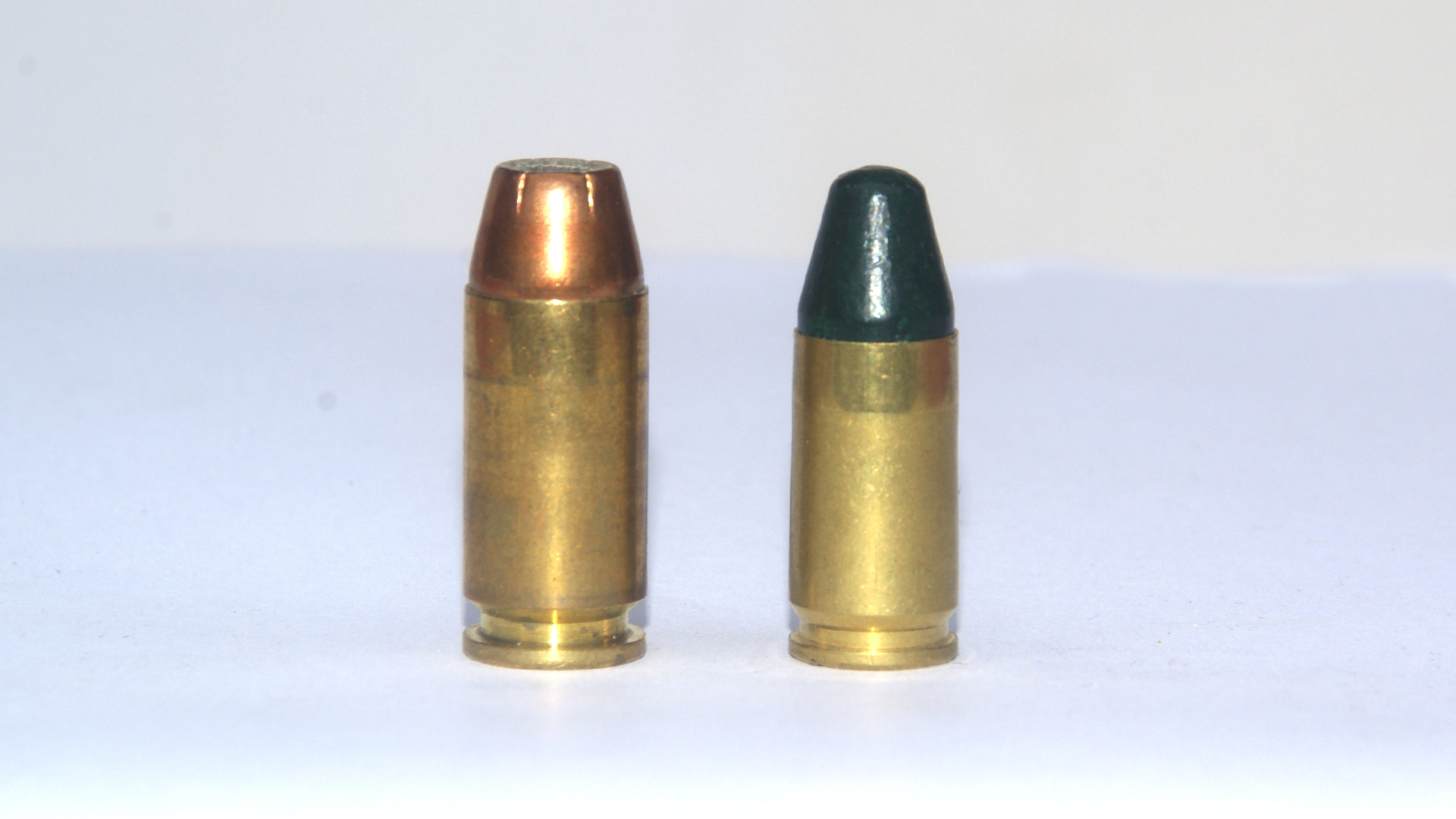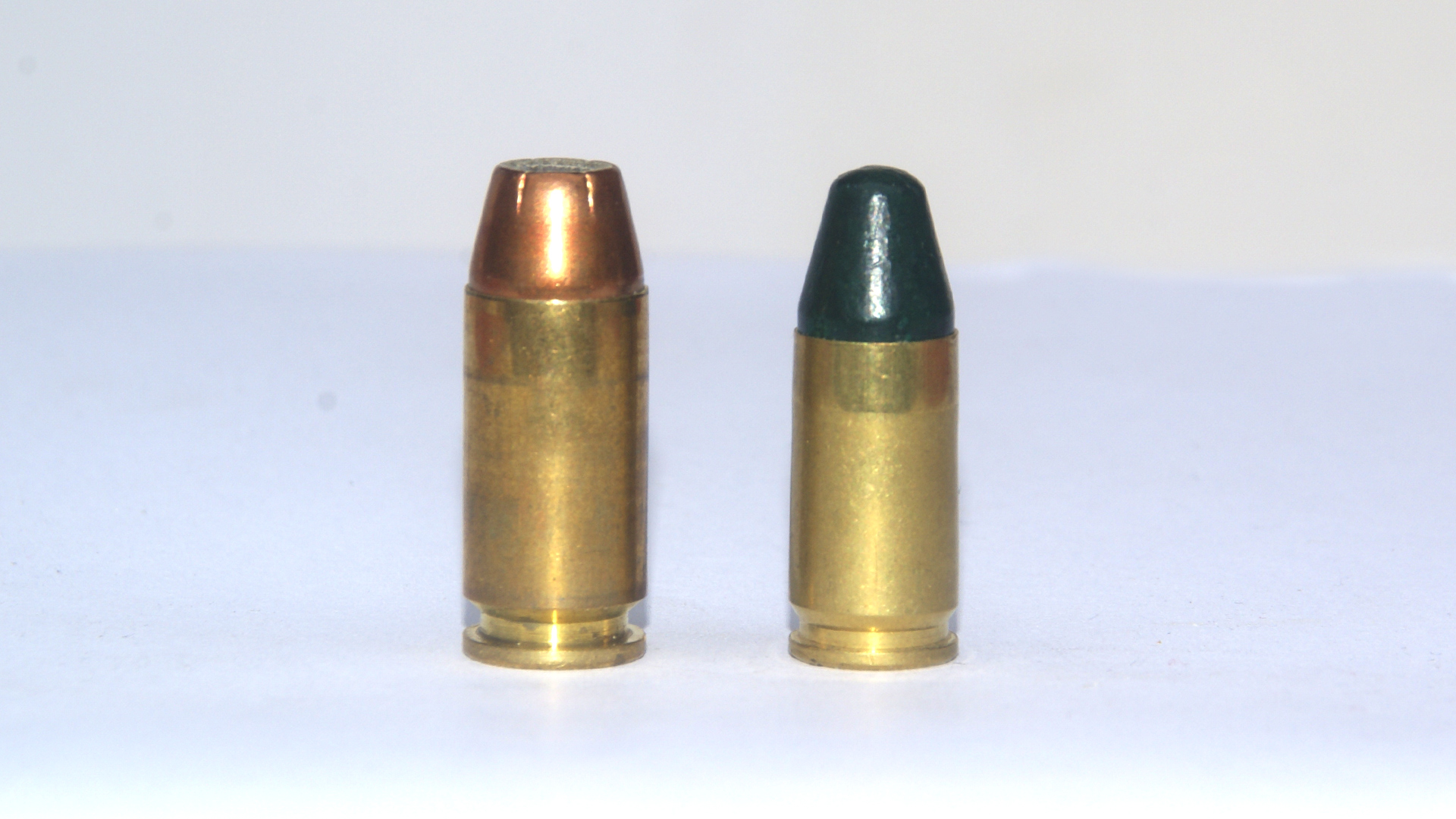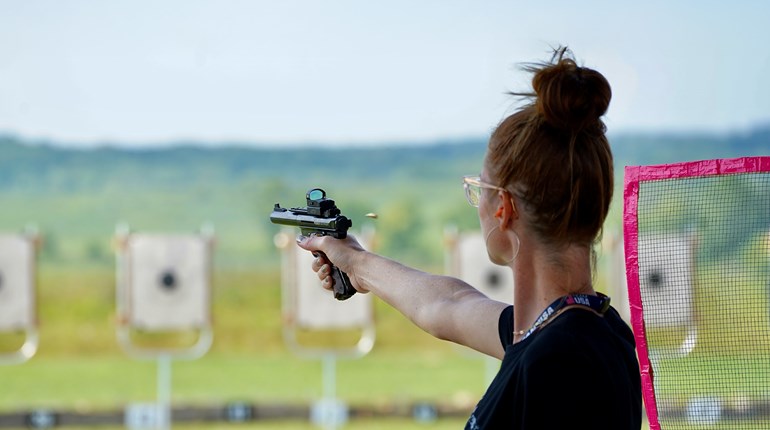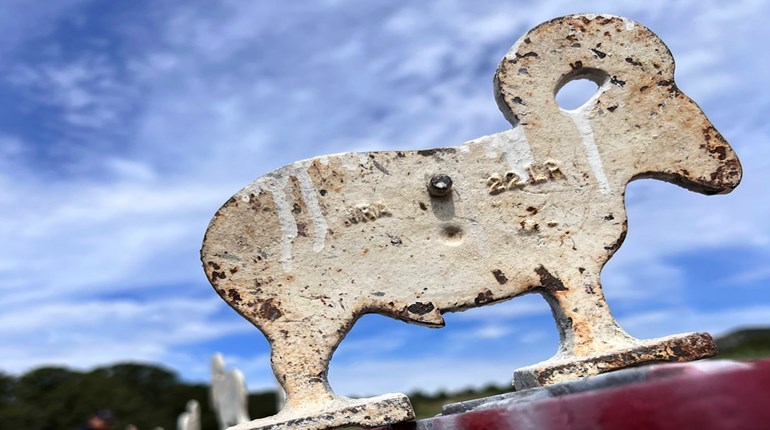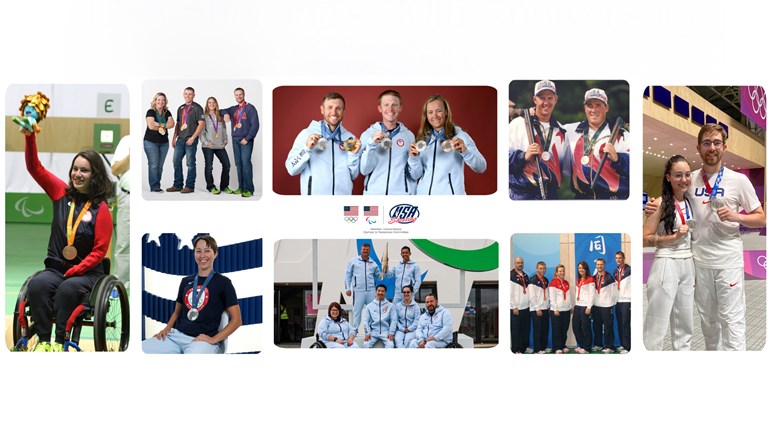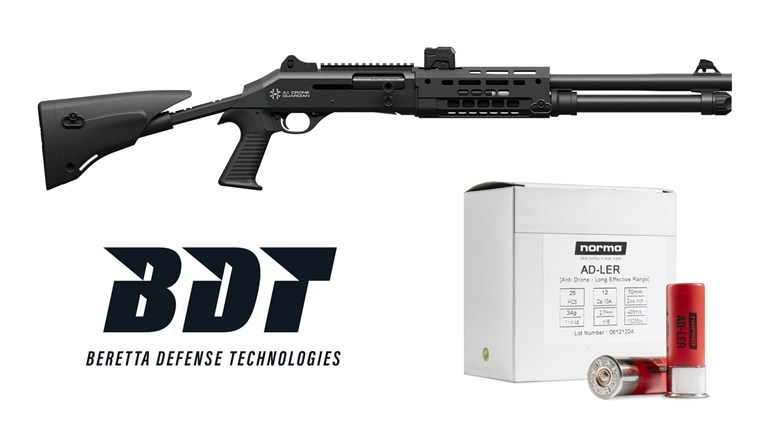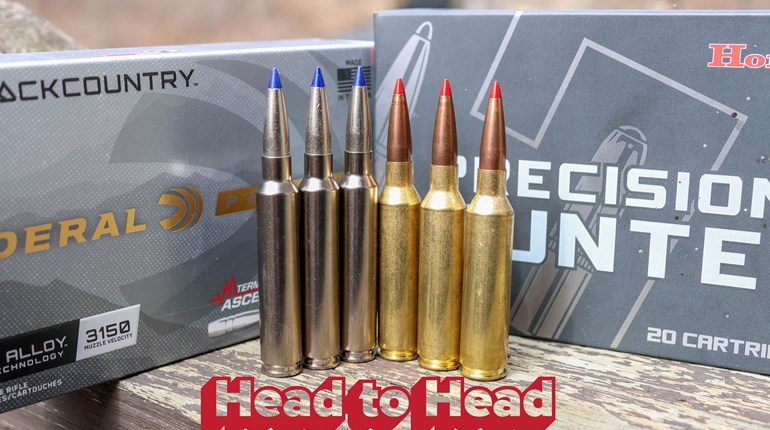
The 1972 NRA National Championship program cover commemorated the NRA’s longstanding history and served as a declaration of the organization’s promise to provide shooters the opportunity to compete in the tradition of the National Matches—a tradition that had been compromised to some degree at the federal level in every decade of its existence.
The NRA was well versed in the procedures and policies of conducting national competitions with little or no government support, although 1972 differed from other years in the post-1968 era in that a military support plan was in place. The Army presence represented a fraction of what was on hand during the attendance-busting programs of the early 1960s, but it was a positive sign, nonetheless. The NRA’s Louis Lucas was a seasoned official in his fifth straight year as Match Director and an integral coordinator position had been created the year before to supervise the most critical element of the staff—the volunteers. Former DCM Director and NRA Field Representative John K. Lee, Jr., who had already served in a variety of National Match capacities, was the first appointed volunteer coordinator.
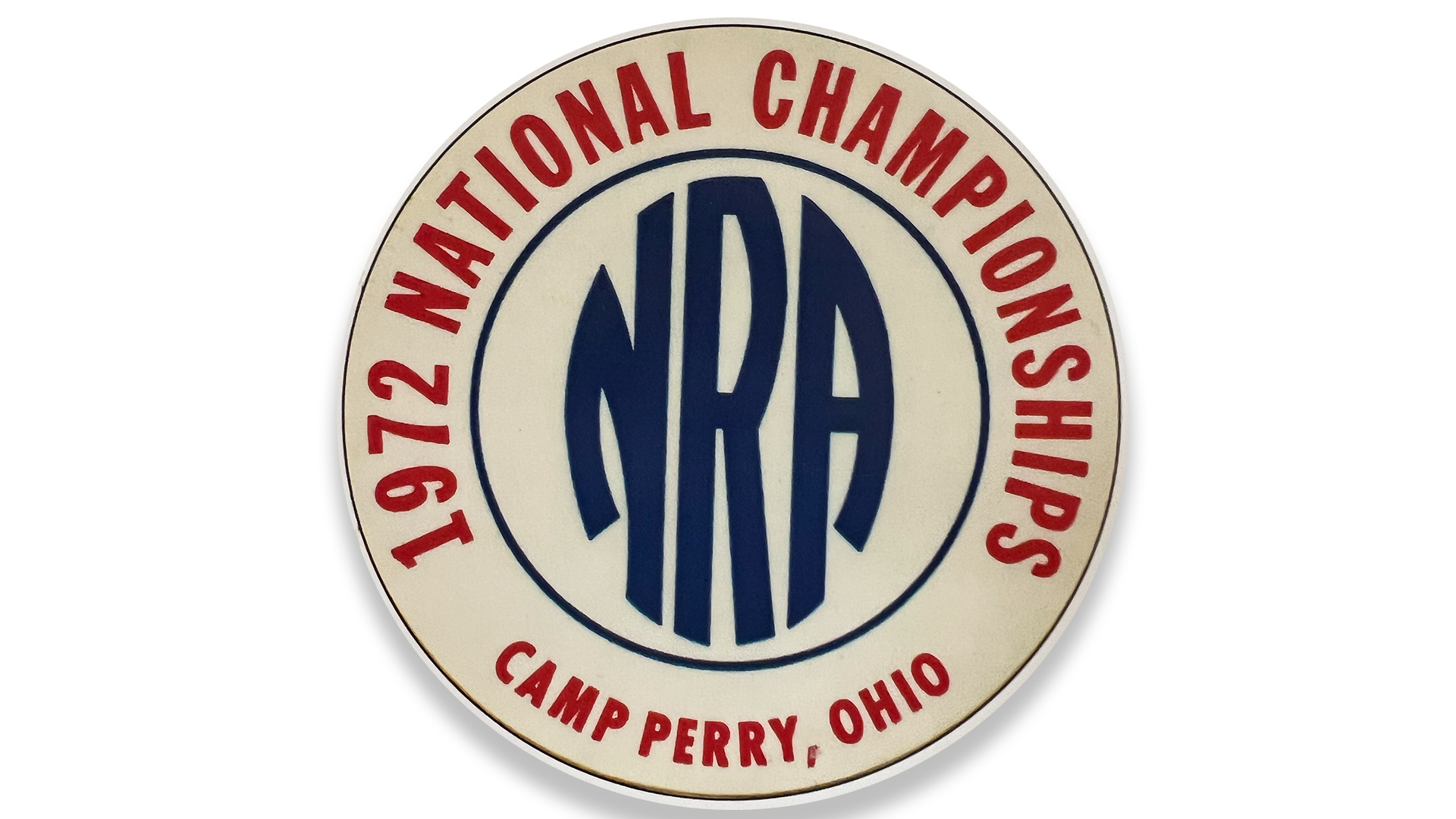
The contest calendar in 1972 provided a steady stream of close finishes that was punctuated by monsoon-like rains during the first week of August. Before the Camp Perry weather gods unleashed their fury, however, the pistol phase was fired under calm conditions from which a new national champion emerged.
Army Sgt. Bonnie Harmon set the pace early by winning the Warm-Up Aggregate before steering his Smith & Wesson Model 41 to the .22 Caliber Championship. Harmon had won championship sub-aggregate matches in the past, and in 1972 his 2650-121X total was good for the national honor by a difference of four Xs over his nearest opponent, Donald Hamilton. Hamilton, possessor of three national titles (1965, 1966 and 1969), was the 1972 Center-Fire Championship winner and proved to be the master of consistency over the last decade. In 1962, he finished second to Bill Blankenship in X-count and placed in the top three overall every year since, with the exception of 1963.
Harmon, who normally fired a .38 in center-fire, opted for his .45 this time around in anticipation of windy conditions. As it turned out, center-fire day was calm and Harmon finished eight points behind Hamilton, eliminating the six-point advantage he had going into the contest and putting him down two entering the .45 stage. The first national title race of the summer program was complete when Harmon’s 884 score in .45 competition bettered Hamilton’s by the two points he needed, thus leaving the two deadlocked at the top, with Harmon’s higher X-count the deciding factor. Army Staff Sgt. Barbara Hile defended her women’s title, while the only other repeat winner was Charles Wheeler in the Army Reserve category.
Harmon’s touch in 1972 was golden as he again went to the wire with Hamilton, this time in the National Trophy Individual Pistol Match, and emerged the victor by one point to claim the Custer Trophy. He was also a member of the Army unit that won the Gold Cup in the National Trophy Team Match and, a few days prior, fired the top score in Mayleigh Cup competition and contributed to the U.S. Army Blue win in the NRA Pistol Team Aggregate for the Twining Trophy. For Hamilton, the runner-up syndrome was rampant this year when you factor in his 1972 President’s Match effort that fell one point shy of Marine Gunnery Sgt. Billy Taggert’s winning score.
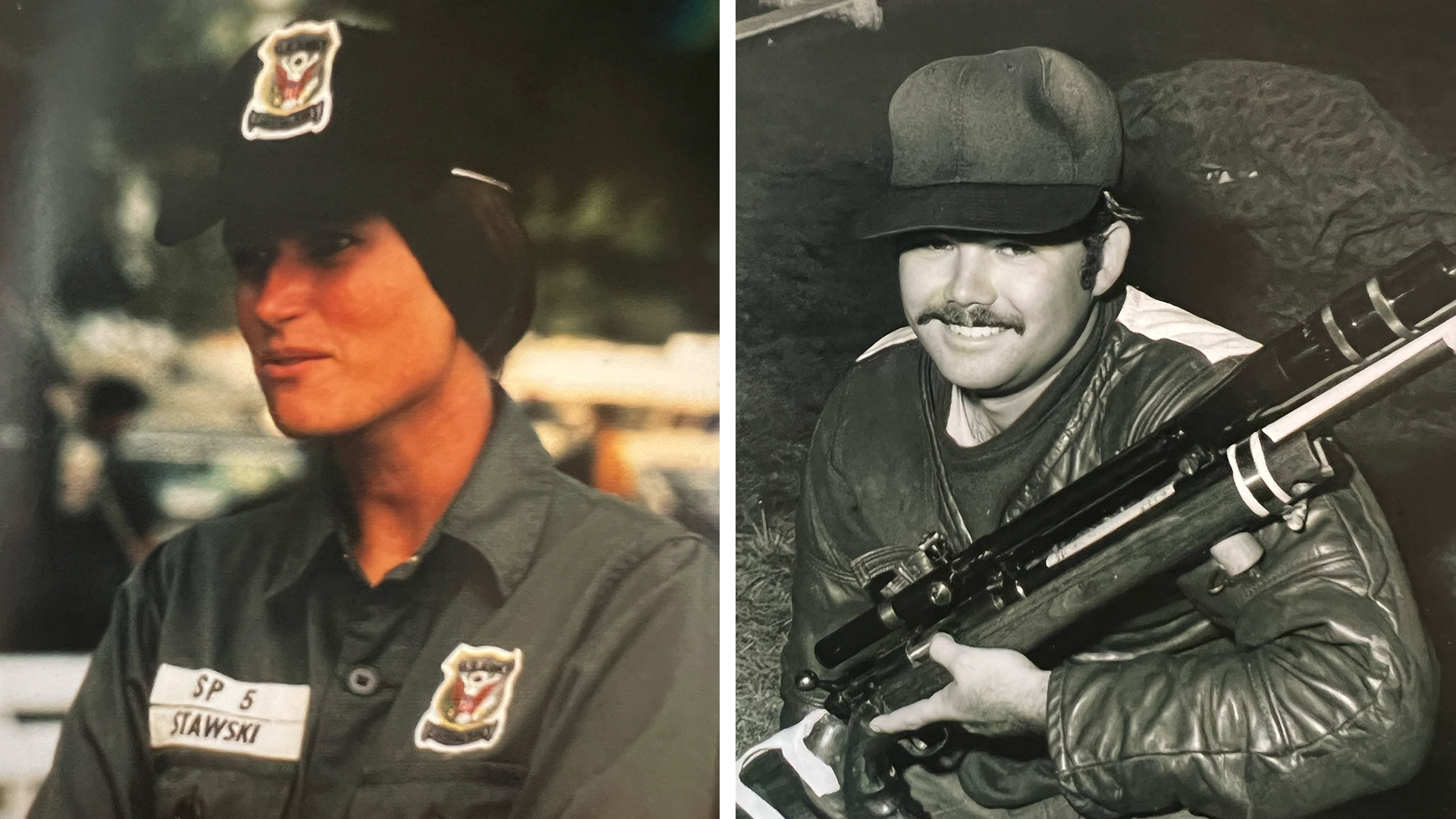
Smallbore shooters Lones Wigger, Jr., and John Foster had both recently returned from Vietnam and did not expect that monsoons, indigenous to the region they just left, would follow them to Lake Erie, but that is exactly what happened. Prone competition opened under sunny skies before conditions changed drastically. For the rest of the championship, shooters waded through standing water as they went about setting up equipment and changing targets.
One of the closest run championships on record began when Maj. Presley Kendall made it clear he was up for the challenge—by Mother Nature and the field of almost 500 competitors. Kendall opened the competition with a 400-40X for the win in the 50-yard metallic-sight match and added another winning 400 in the Dewar Course Match the following day. Despite these, plus other match wins by the likes of David Avril, Bruce Meredith, Ray Carter, Tom Whitaker and Dennis Ghiselli, the metallic-sight winner was Army Pvt. Steven Kern, who had only placed second in the first Dewar. His consistency, however, put him at the top after the first half of prone with a score of 3197-247X.
When any-sight competition got underway, it was so wet that the use of nautical speak on the firing line was more than appropriate. Dave Ross, the 1970 prone champion, struck first with a 400-40X and overall, weather had a limited effect as perfect scores and high X-counts prevailed.
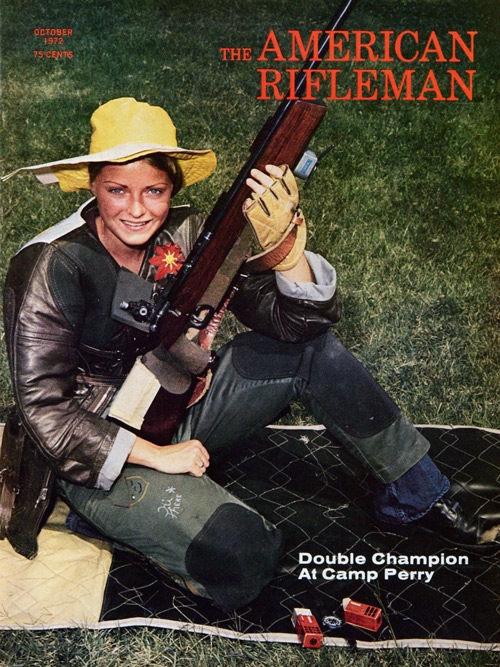
Ross made a valiant attempt to regain his crown by winning the any-sight title, but it was Kendall who claimed the national championship title when his score of 6394-536X earned him his second trip atop the awards podium. Just two Xs behind was Meredith, while Ross earned third place. Ransford Triggs took home another senior title, while Army Reserve Capt. Margaret Murdock added another Remington Trophy to her collection. In addition, Tom Whitaker, who competed as a civilian, became the first recipient of the William P. Schweitzer Award for his victory in that category.
The position matches took place under different circumstances as clouds blew over and typical August weather at Camp Perry returned. Eventual women’s and junior champion Mary Keys won the first metallic-sight match, while John Foster laid claim to the second. But it was left-handed Marine Gunner D.I. Boyd who burst out of the pack during the first match of any-sight competition and fired a record score of 799-58X, an X better than the previous mark set by Lones Wigger in 1966. Boyd carried his momentum into the second any-sight match with 795-49X and slammed the door on the field. The new national position champion shot a score of 3173-193X, seven points ahead of the 1971 champion, Lones Wigger. Additionally, Ed Etzel topped the civilians, while Robert Kline secured the senior laurels.
A National Match record score was fired in the high power championship —with an M14. Army Sgt. 1st Class Martin Edmonson became the seventh shooter in National Match history to fire the high overall high power score with a service arm, a feat last accomplished by M.R. Menlove in 1966. Edmonson’s 1574-52X included a victory in the Members’ Trophy Match and a perfect score in the 600-yard Air Force Cup Match.
One point behind Edmonson was Ronald Troyer, the national champion the previous two years, who was the high match rifle competitor and earned the national civilian title. G. David Tubb won his third straight junior title while his mother, Pauline, lost her two-year grip on the women’s title to the Army's Joanne Stawski who, like Edmonson, fired an M14 rifle.
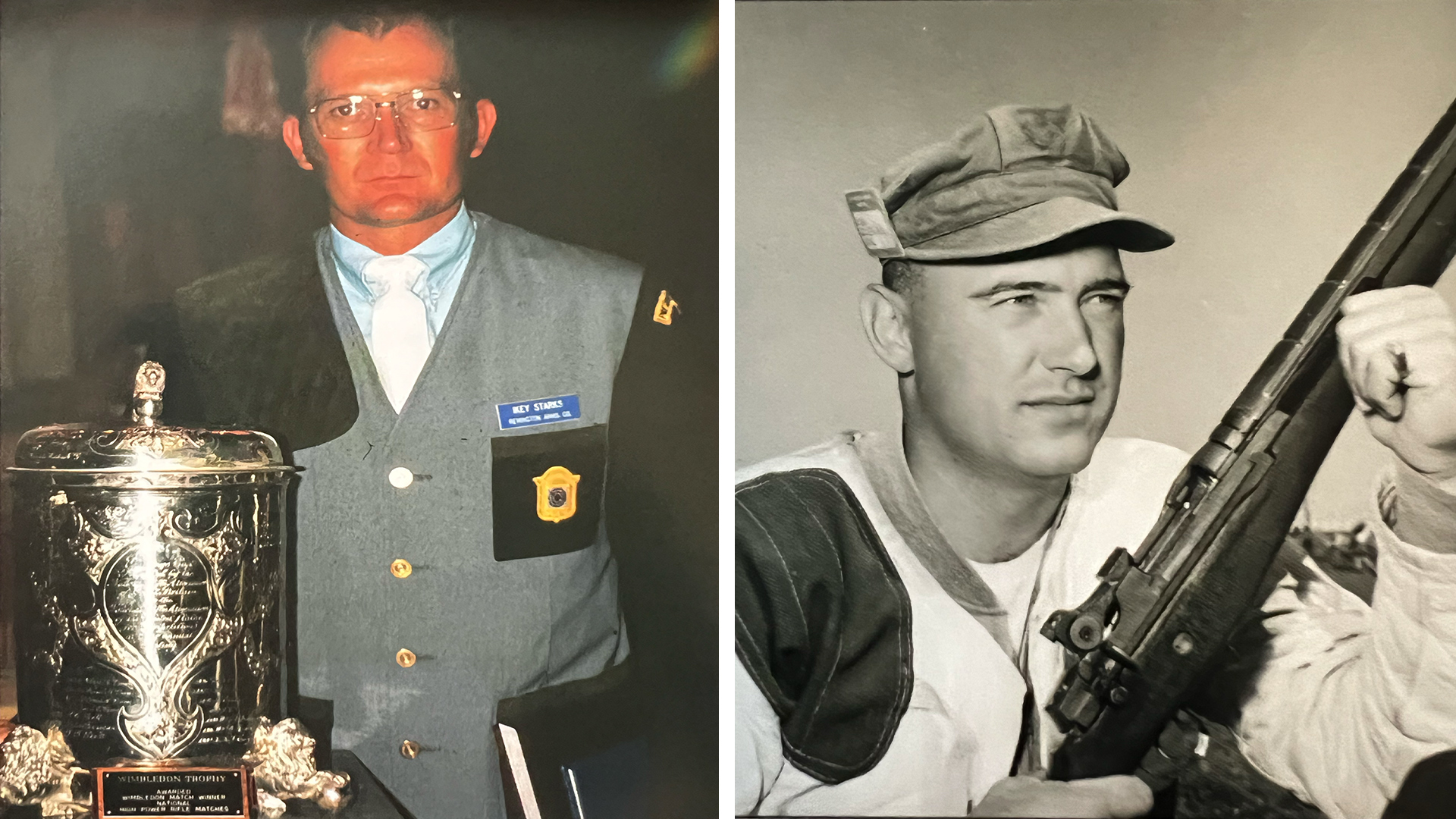
“Military armorers at six portable maintenance shops stand ready to administer Hoppe’s No. 9 to sticky gas pistons or perform minor surgery on more serious conditions.”
—The American Rifleman, October 1972
Marine CWO Ray Green stayed on track in the fog-delayed Wimbledon Cup Match when he eclipsed the record mark set by Thomas Treinen just two years earlier. Prior to Treinen’s 1970 score, the record had stood for more than six decades. Green upped the record by 11 Vs and fired his 100-20-23V with a Hart-barreled Remington 40X chambered for the .300 Winchester Magnum cartridge. In the other 1,000-yard contest, Army Reserve Lt. Col. Sam Burkhalter won the Leech Cup after a tiebreaker.
After ending a long drought the year prior by winning the Enlisted Men’s Trophy Match, Marines remained atop the field in 1972 in record fashion, while the Rumbold Trophy Match was won for the third straight time by a California team. Army shooters duplicated what their compatriots accomplished earlier in the program during the National Trophy Pistol Matches and won both individual and team honors. Army Reserve Capt. David Cramer set a new mark in the National Trophy Individual contest with his 491-15X while Army Blue, with Edmonson on the squad, won the team event by two points over the Marines.
1972 National Matches Fact
At the National Board for the Promotion of Rifle Practice’s April 1972 meeting, the return of the Small Arms Firing School to the National Match program was discussed and a motion was passed to appoint an Ad Hoc Committee to study the issue.

